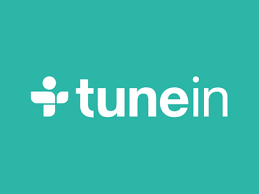Artemis 2 Astronauts Flying to the Moon Could Phone Home with Ham Radio
/It's been 40 years since the first astronaut called an amateur radio operator on Earth. Now the moon is in the community's sights.
Most of the astronauts aboard the Artemis 2 mission, which will send a quartet of people around the moon in late 2024, are certified ham radio (amateur radio) operators. There's high hopes in the community that the astronauts may call home from deep space, the president of Radio Amateurs of Canada told Space.com.
“We feel it’s important that anyone, especially kids as they determine what they want to do with their life, have that opportunity.”
After four decades of communication with low Earth orbit, he added, the hope is ham radio will reach further out with the moon.
The first ham radio operator in space was NASA astronaut Owen Garriott (W5LFL), who on 1st December 1983 called Lance Collister (WA1JXN) in Frenchtown, Montana. A ham radio was even aboard the Russian space station Mir, according to NASA(opens in new tab), during the shuttle-Mir program that saw NASA astronauts visit the orbiting complex.
Today's ham operators communicate with astronauts through Amateur Radio on the International Space Station (ARISS), largely aiming to let students directly talk with spaceflyers, according to documentation from the group(opens in new tab). As of 2022, NASA reports that more than 100 crew members(opens in new tab) have connected with 250,000 participants on the ground via ARISS.
It's unclear if ham radio equipment will be onboard Artemis 2 as the mission manifest is not yet decided, Space.com confirmed with Chief Astronaut Joe Acaba and two of the crew members (NASA's Reid Wiseman and the Canadian Space Agency's Jeremy Hansen) in interviews last month. In theory, though, the main requirements would be adequate power and storage space for radio equipment, spare time for the crew to devote to the radio during their 10-day mission and a line of sight with Earth.
Three of the four Artemis 2 astronauts are certified hams, however, with call signs for Wiseman (KF5LKT), Hansen (KF5LKU) and NASA astronaut Victor Glover (KI5BKC). The other crew member, NASA astronaut Christina Koch, was studying for a 2019 amateur license exam when her record-setting one-year flight was abruptly rescheduled six months earlier than expected, according to the National Association for Amateur Radio(opens in new tab). Koch delayed the certification in favour of completing the mission training for her 328-day sojourn that ended on 10th February 2020.
The first ham radio operator in space was NASA astronaut Owen Garriott (W5LFL), who on 1st December 1983 called Lance Collister (WA1JXN) in Frenchtown, Montana. A ham radio was even aboard the Russian space station Mir, according to NASA(opens in new tab), during the shuttle-Mir program that saw NASA astronauts visit the orbiting complex.
Today's ham operators communicate with astronauts through Amateur Radio on the International Space Station (ARISS), largely aiming to let students directly talk with spaceflyers, according to documentation from the group(opens in new tab). As of 2022, NASA reports that more than 100 crew members(opens in new tab) have connected with 250,000 participants on the ground via ARISS.
Read More (Media Story) - https://www.space.com/nasa-artemis-2-moon-mission-ham-radio



